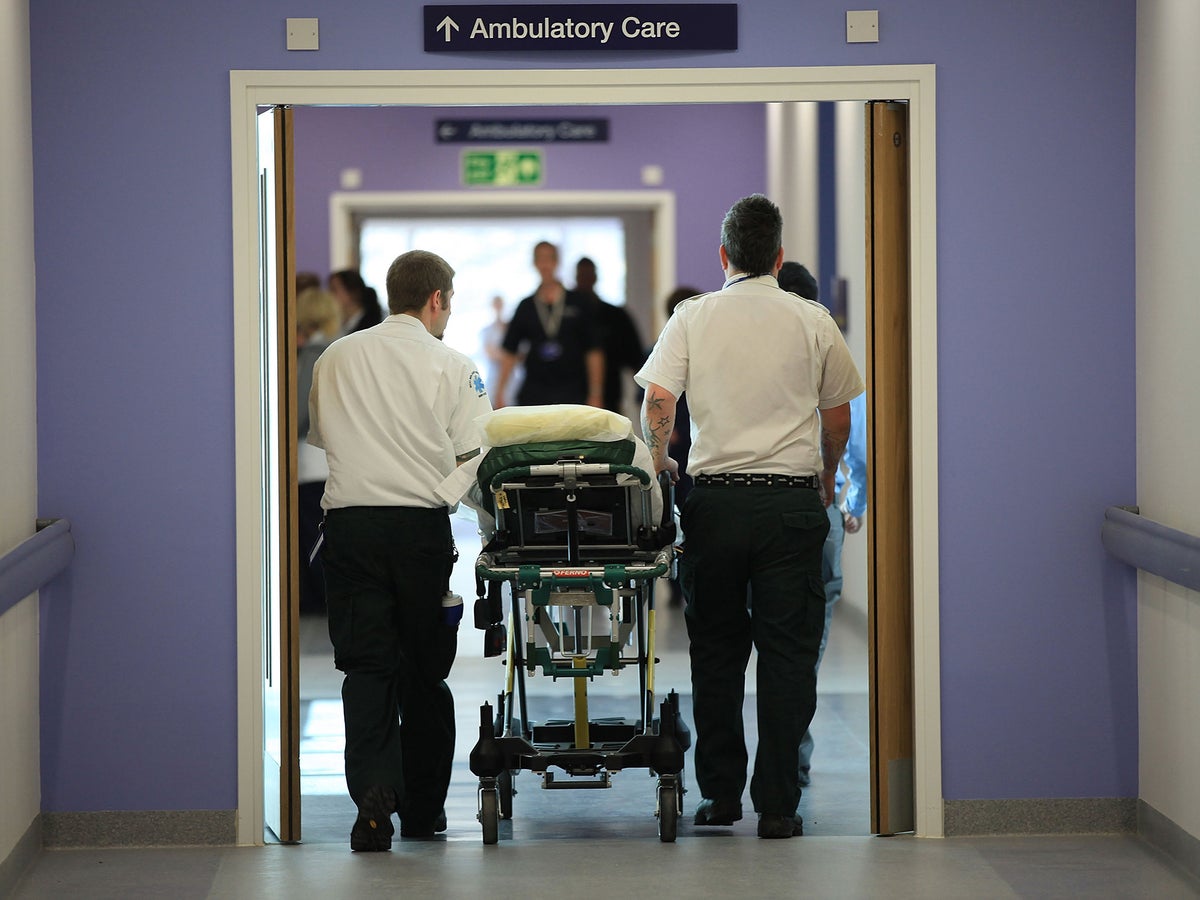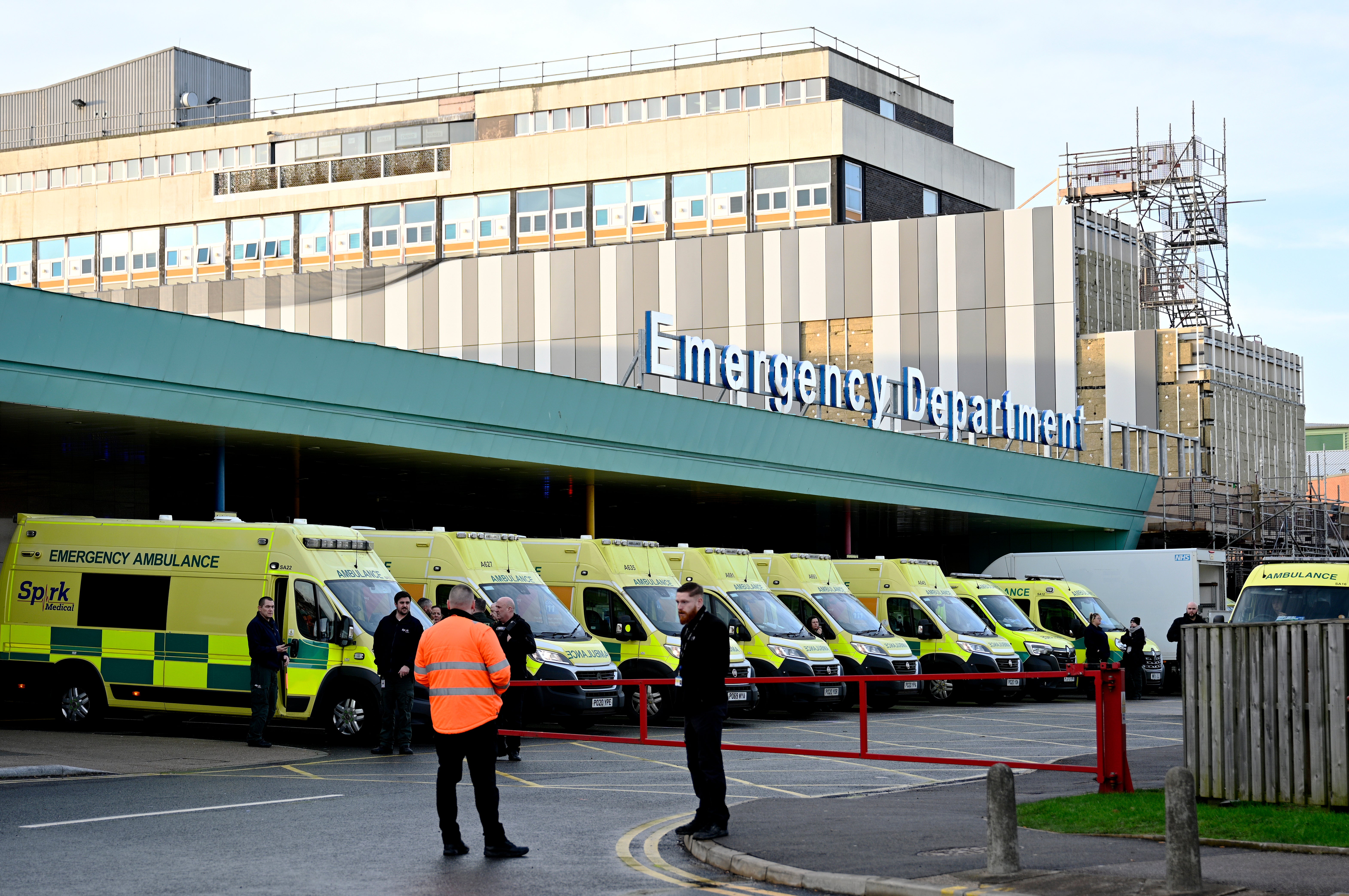
A dementia patient waited five hours for an ambulance before spending three days being treated in an A&E corridor.
Susan Roberts, 72, had a fall at her home in Liverpool on 9 December and waited for hours on the floor after calling an ambulance.
Once paramedics arrived at the house, she was so scared of going to the hospital she refused to go, but a day later she found it painful to move so another ambulance was called. This time Ms Roberts waited for two hours.
Her daughter, Adele Browne, described “horrific” scenes when she and her mother arrived at Liverpool’s Aintree Hospital on 10 December, which left her mother saying: “I wish I was dead, I just don’t want to be here.”
She said her mother was treated in the corridor for three days alongside scores of other patients before a bed on a ward became available, which meant her mother was forced to answer intimate questions in front of others.
Have you been affected by a long A&E or ambulance wait? Email rebecca.thomas@independent.co.uk
After the “traumatic” experience, Ms Browne said she feared about her mother having to go back to the hospital again.
Ms Browne said the A&E department was like a “war zone”, and said her mother was distressed, dehydrated, and screaming in fear. Despite being exhausted, Ms Browne said she felt she could not leave her mother there alone.
Ms Browne said: “She hates going into hospital anyway because the hospital where she has to go is our local hospital, where my dad died. So being in the corridor for three days was awful, and exacerbated the stress that she feels.
“For anyone to spend three days in a corridor is barbaric.”

Ms Roberts was discharged days after she was admitted, but her daughter was concerned it was too early. It took paramedics an hour to get Ms Roberts from the ambulance to her chair when they brought her home.
After Ms Browne’s husband raised concerns with the ward, she said it was “like talking about an Amazon parcel”, with staff saying of Ms Roberts: “She was fine when she left us.”
It comes as the NHS experiences unprecedented problems within its emergency system. On Thursday, NHS data showed a record 54,000 people had waited in A&E for more than 12 hours following a decision to admit them in December.
However, internal data seen byThe Independent shows that if waiting times were measured from the time a person arrives in the emergency department, the figures would be closer to 200,000 for last month.
The latest NHS data also showed a collapse in ambulance response times, with the most urgent calls taking 10 minutes to attend, when the target time is seven minutes. The second most urgent category of patients, category 2, took 90 minutes on average to get a response in December. These calls should be attended within 18 minutes.
Dr Jim Gardner, chief medical officer at Liverpool University Hospitals NHS Foundation Trust, which runs Aintree University Hospital, said that like many hospitals it was facing unprecedented pressures.
“Our staff are working incredibly hard throughout the hospital to provide safe care for patients in what are extremely challenging circumstances and to manage these pressures. This includes triaging patients on arrival, prioritising care according to clinical needs, and regular reviews and safety checks to monitor and support patients whilst they are in the emergency department,” he said.
“We appreciate how difficult the current situation is for patients, their families and our staff. We would like to thank the public for their continued support and kindness at this time.”







